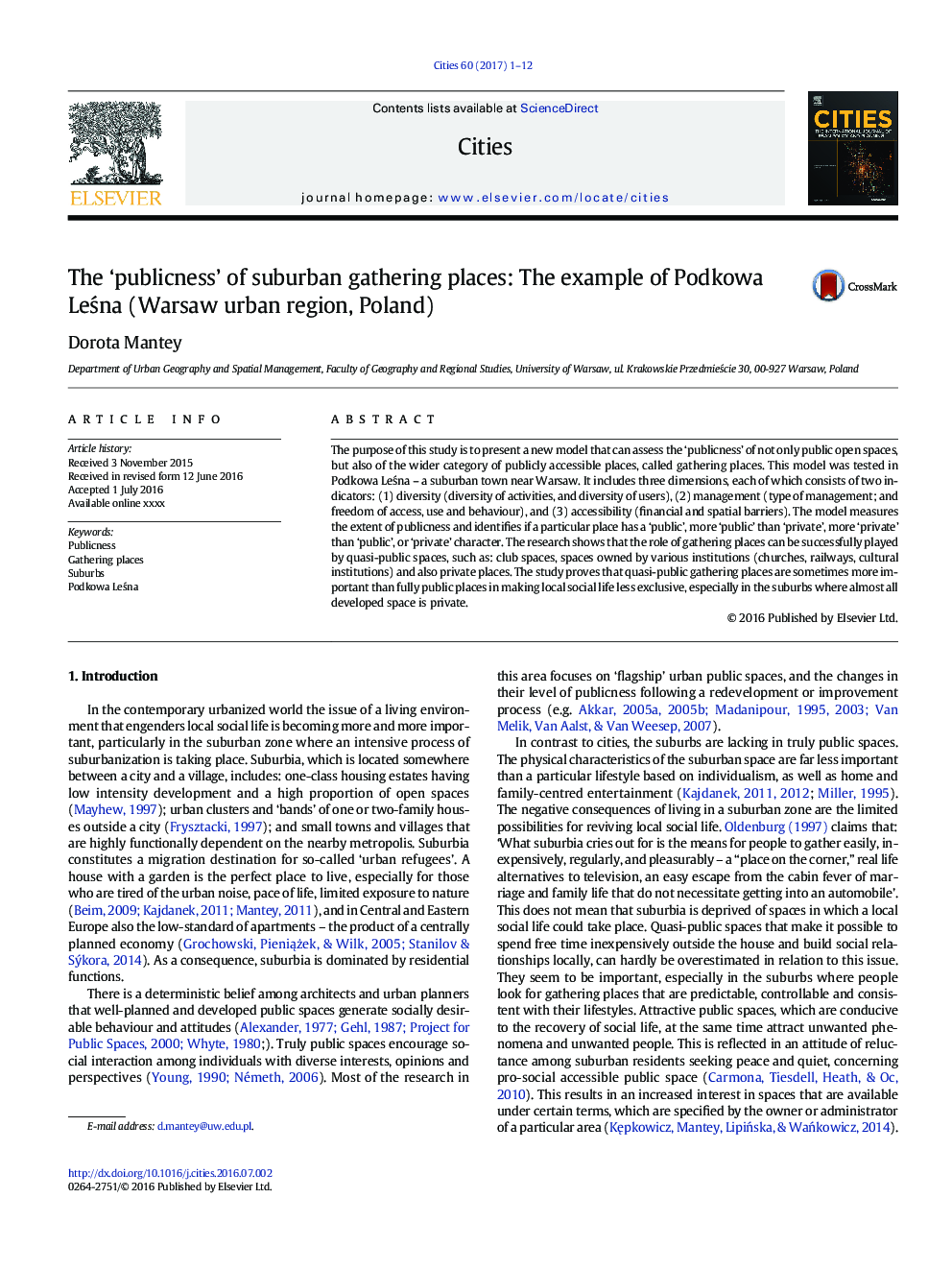| Article ID | Journal | Published Year | Pages | File Type |
|---|---|---|---|---|
| 1008151 | Cities | 2017 | 12 Pages |
•Fully public space can be replaced by quasi-public gathering places when reviving the local social life.•Quasi-public gathering places are important especially in suburbia.•People of different age groups give priority to different ‘publicness’ attributes.
The purpose of this study is to present a new model that can assess the ‘publicness’ of not only public open spaces, but also of the wider category of publicly accessible places, called gathering places. This model was tested in Podkowa Leśna – a suburban town near Warsaw. It includes three dimensions, each of which consists of two indicators: (1) diversity (diversity of activities, and diversity of users), (2) management (type of management; and freedom of access, use and behaviour), and (3) accessibility (financial and spatial barriers). The model measures the extent of publicness and identifies if a particular place has a ‘public’, more ‘public’ than ‘private’, more ‘private’ than ‘public’, or ‘private’ character. The research shows that the role of gathering places can be successfully played by quasi-public spaces, such as: club spaces, spaces owned by various institutions (churches, railways, cultural institutions) and also private places. The study proves that quasi-public gathering places are sometimes more important than fully public places in making local social life less exclusive, especially in the suburbs where almost all developed space is private.
